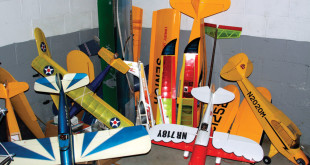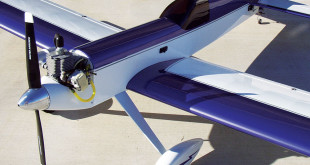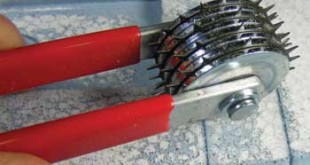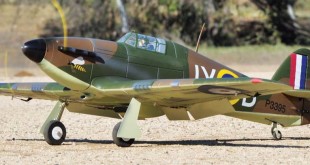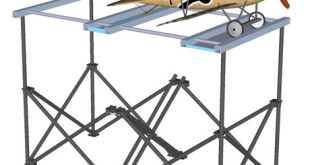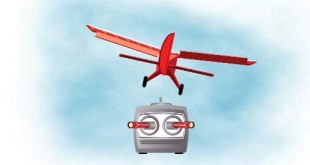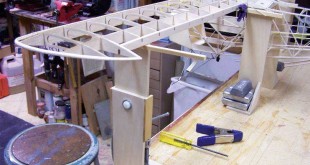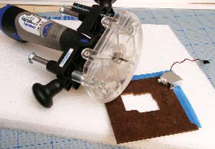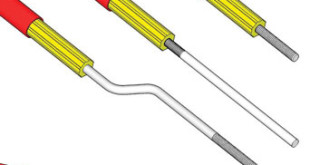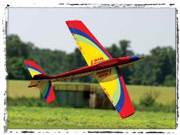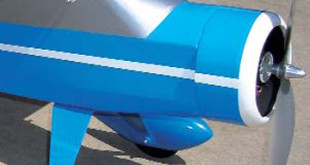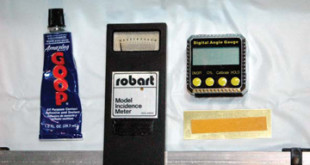Conquer Workshop Clutter This Weekend! If you have been in RC for a while you can probably relate to the inevitable crowded workshop corner where partially completed airframes sit mixed with those finished and flight ready, and maybe …
Read More »How To’s
Fabricating Composite Landing Gear
After bending a few aluminum landing gears on hard landings, I decided to make my own out of fiberglass and carbon fiber. My expertise as an engineer was designing carbon fiber structures and components for communication satellites so this endeavor was right up my alley. Many auto makers are now using carbon fiber composites for springs and body parts because they are not only lighter, they absorb energy better than steel and are three times stronger. For those same reasons, RC model airplane landing gear is a perfect application for composites.
Read More »Enhancing Your EDF
Get the Best Performance from Your Foam EDF Jet Today’s RC flyer has a huge variety of molded foam ARF and RTF scale and sport planes to choose from and the EDF (electric ducted fan) is one of …
Read More »Simple Weathering Techniques
One of the goals of having a scale model is that you want the model to look real; to reproduce the full-scale aircraft. There is nothing more dramatic looking than seeing a warbird that looks like it has …
Read More »Make A Starting Stand
Recycle your old "Bag Chairs" by making something useful out of them. Based on the number of inquiries at the recent Hoosier Dawn Patrol at the AMA grounds in Muncie, Indiana has motivated me to share my ‘discovery’.
Read More »Flying the Crosswind Landing
As an airline pilot, I get to fly with pilots from every background imaginable—some are civilian trained like myself, and others are military trained pilots who have flown heavy tankers, helicopters, and high performance fighters in their previous …
Read More »Build a Wing Washout Jig
When building any model airplane, it is important that the wings have a bit of washout; and if the plane is going to fly properly, the wings should be washed out equally on both sides.
Read More »Expand the Versatility of a Dremel Tool
Most modelers consider the Dremel tool to be a must-have accessory for the workshop. They use them for any number of routine tasks, from trimming music wire to sanding, drilling, grinding and shaping. Many modelers I have talked to don’t ask their Dremels for much more than that though, and this is a shame.
Read More »Beginner’s Guide To Pushrods and Connectors
For those people who are new to the hobby, the simplest things can cause a great deal of confusion. I have recently noticed that a lot of newcomers are baffled by the assortment of pushrod connectors available. So in an attempt to fill this void, I've put together this little article in hopes of shedding some light on the subject.
Read More »Glow To Electric Conversion Tips – Part II
Last month, I discussed a generic 10-step process to convert a glow model to electric. This month we will deal with the specific things you may need to do with any model, but concentrating specifically on the Hobbico Avistar.
Read More »Building Round Engine Cowls
Airplanes with round engines have a unique look that appeals to many modelers and aviation enthusiasts. From the early fighters of WWI through Golden Age classics to modern aerobatic aircraft such as the Sukhoi, they have that special attraction. As almost any veteran pilot will tell you, fullsize airplanes have round engines.
Read More »Digitize Your Robart Incidence Meter
If you are an avid model builder, you most likely have an important instrument in the toolbox called an Incidence Meter. For you newcomers, this device allows you to measure the alignment angles of your wing, tailplane engine thrustline and fin to the fuselage itself, so that the aircraft will fly correctly. On high-performance models, these incidence angles are critical to attaining top performance. Mostly used when building models from a kit, plans or scratch-built, an incidence meter is also very handy while setting up most ARFs. One of the most popular incidence meters of all time has got to be the Robart Incidence Meter. It is simple yet very effective, using a pendulum type pointer set against a printed gauge face to provide you with the measured wing angle in degrees.
Read More »Glow To Electric Conversion Tips – Part I
It is now summer 2011 and still there are two questions that crop up in my emails. Can you equate an electric motor to a glow equivalent? How do you go about converting a glow model to electric? The answer to the first question is technically no, but manufacturers do and they are doing the motor a disservice by doing so. The answer to the second question is the main thrust of this article.
Read More » Fly RC Magazine WE LIVE RC
Fly RC Magazine WE LIVE RC
